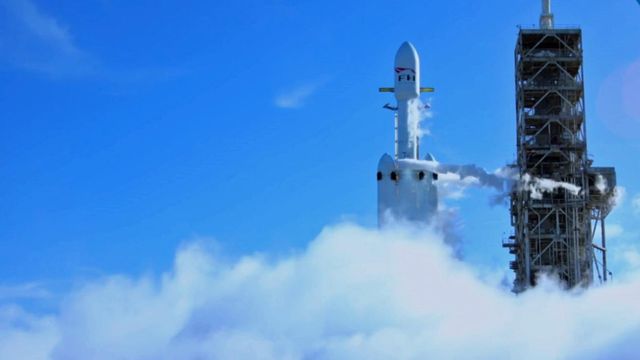SpaceX brought a rocket engineer and his doctor closer together
Dr. Jacob Lippert recently graduated the University of Michigan and immediately began practicing physical therapy and neuro-rehabilitation. Dr. Jake, as he encourages his patients to call him, is also a self described "space nerd".
Posted — UpdatedDr. Jacob Lippert recently graduated from the University of Michigan and immediately began practicing physical therapy and neuro-rehabilitation. Dr. Jake, as he encourages his patients to call him, is also a self-described “space nerd”.
Physical therapists have a unique opportunity that other health care professionals often don’t: time to connect with their patients. When you’re a space nerd, rockets are going to come up at some point. For one of Dr. Jake’s patients, it provided a connection between doctor and patient that put recovery into high gear.
Lippert likes to strike up a conversation during warm-up for a physical therapy session. He did just that with a recent patient, we'll call him Gus, chatting about his days an electrical engineer. When Gus described his work as being “on a few vehicles,” Dr. Jake’s Michigan roots took his thoughts immediately to the auto industry.
Those vehicles turned out to be the Mercury Redstone rocket, Gemini capsule and the Apollo command and lunar modules.
“Nero rehab is hard, it takes a lot of frustration, and a lot of dedication to successfully build back neural pathways” Lippert explained. “The rule of thumb in any physical therapy is saliency; make the therapy matter to the patient. Otherwise you’re both just spinning your wheels.”
As Gus arrived for a session on the day of the Falcon 9 Heavy test flight, Dr. Jake knew just how to make that day’s activities matter.
“I set up my laptop across from the parallel bars and told him, we’re going to watch the launch, but only while you are standing”, Lippert challenged. “He made it from T-30 second to 30 seconds after liftoff, twice as long as he’d been able to stand before. I could see the fire in his eyes.”
Gus then improved that record, standing a full four minutes as doctor and patient watched booster separation through the return for a landing at Cape Canaveral Air Force Station, between the Redstone and Titan launch sites where Gus had worked as a young engineer.
A few weeks later, Gus arrived eager to hear about that day’s Falcon 9 launch from Vandenberg Air Force Base in California.
"For something this special, I'm going to want something big.”, Lippert explained. “If you can walk (with a walker) around the gym, I'll show you how they did today.”
Since his stroke, the furthest Gus had walked was 30 feet. But he stiffened up and pressed on as Lippert challenged "Come on, only victors get the news!" Gus covered the 83 feet in six minutes; then lowered himself into a chair with control, also a first.
"Now, about that fairing.”
Lippert shared Elon Musk’s photo of a payload fairing bobbing in the ocean. Fairings are like a clamshell, encasing the payload during ascent, and are normally discarded. They also cost about $3 million to build. Recovery and and reuse could save about 10% of the cost of the launch.
The still steely-eyed missile man knew better than any what this can mean to the space industry.
As engineer stood in awe of SpaceX’s accomplishments, doctor stood in awe of what his patient has accomplished, then and now.
Related Topics
• Credits
Copyright 2024 by Capitol Broadcasting Company. All rights reserved. This material may not be published, broadcast, rewritten or redistributed.





